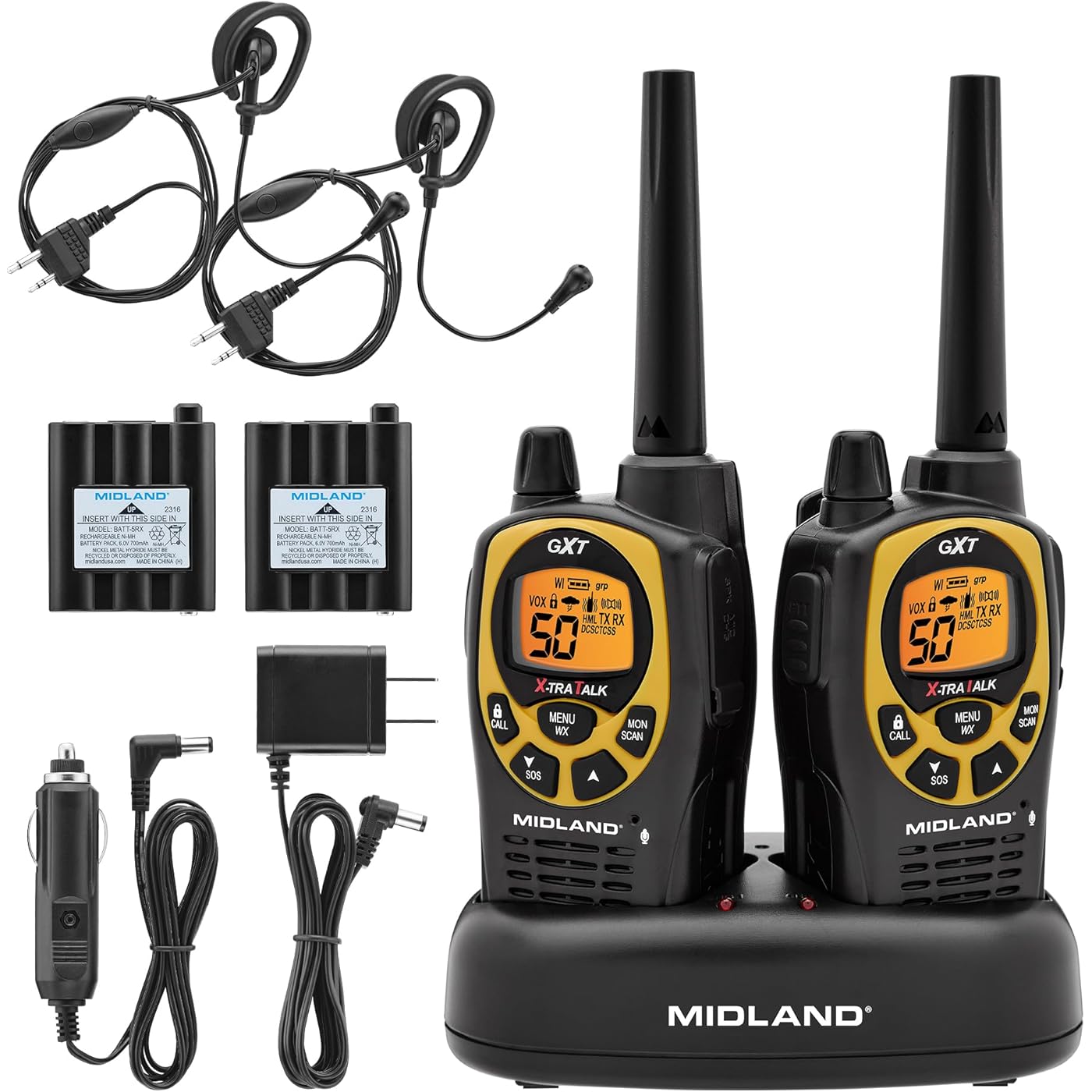Midland GXT1030VP4 GMRS Two-Way Radio (50-Channel, Long Range, 142 Privacy Codes, SOS, NOAA, Rechargeable Nickel Battery, Black/Yellow, 2-Pack)










Buy Now, Pay Later
- – 6-month term
- – No impact on credit
- – Instant approval decision
- – Secure and straightforward checkout
Ready to go? Add this product to your cart and select a plan during checkout.
Payment plans are offered through our trusted finance partners Klarna, Affirm, Afterpay, Apple Pay, and PayTomorrow. No-credit-needed leasing options through Acima may also be available at checkout.
Learn more about financing & leasing here.
Selected Option
Returnable until Jan 31, 2026 Learn more
To qualify for a full refund, items must be returned in their original, unused condition. If an item is returned in a used, damaged, or materially different state, you may be granted a partial refund.
To initiate a return, please visit our Returns Center.
View our full returns policy here.
Size: 2 Pack
Color: Black/Yellow
Features
- Two-Way Communication - Stay connected to family and friends or coordinate group outings with the push of a button. These two-way radios come with everything you need, including rechargeable batteries, chargers and headsets.
- Features - These walkie-talkies feature 50 GMRS channels, along with a channel scan so you can quickly check for activity. The JIS4 waterproof protection makes these radios splash-resistant, making them ideal for outdoor use.
- Power Anywhere - Enjoy the flexibility to use standard alkaline batteries, ensuring your radios stay powered even when recharging isnt an option. Stay connected in the field, off the grid, or during power outages.
- What's In The Box - Pair of radios, belt clips, desktop charger, rechargeable battery packs, AC adapter, DC adapter, pair of boom mic headsets, and an owners manual
- NOAA Weather Scan & Alert - NOAA Weather Scan will automatically scan through 10 available weather (WX) band channels and locks onto the strongest weather channel to alert you of severe weather updates.
Brand: Midland
Color: Black/Yellow
Number of Channels: 50
Special Feature: Long Range
Frequency Range: 462 MHz - 467 MHz
Talking Range Maximum: 57 Kilometer
Voltage: 7.4 Volts
Water Resistance Level: Water Resistant
Product Dimensions: 2.44"D x 2.44"W x 7.91"H
Number of Batteries: 8 AA batteries required. (included)
Is Discontinued By Manufacturer : No
Product Dimensions : 2.5 x 9.8 x 1.8 inches; 4.8 ounces
Item model number : GXT1030VP4
Batteries : 8 AA batteries required. (included)
Date First Available : September 8, 2015
Manufacturer : Midland Radio Corporation
Customer Reviews: 4.4 4.4 out of 5 stars 23,223 ratings
Item Weight: 4.8 ounces
Product Dimensions: 2.5 x 9.8 x 1.8 inches
Item model number: GXT1030VP4
Batteries: 8 AA batteries required. (included)
Is Discontinued By Manufacturer: No
Display Type: LCD
Weight: 4.8 ounces
Date First Available: September 8, 2015
Frequently asked questions
To initiate a return, please visit our Returns Center.
View our full returns policy here.
- Klarna Financing
- Affirm Pay in 4
- Affirm Financing
- Afterpay Financing
- PayTomorrow Financing
- Financing through Apple Pay
Learn more about financing & leasing here.


















